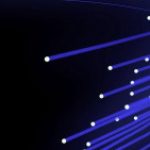- This topic has 13 replies, 2 voices, and was last updated 9 years, 8 months ago by
 alistu.
alistu.
-
AuthorPosts
-
-
October 17, 2015 at 1:40 am #26703
 Dr. Dhiman KakatiParticipant
Dr. Dhiman KakatiParticipantHi all,
one of the reason for power penalty is the timing Jitter. Ifound the following theory:“In digital detection schemes, the received pulse is sampled at particularly clocked timing intervals. The value of the sample is then compared with a pre-set threshold level and based on the decision making mechanism, the bit is assigned to be either ‘0’ or ‘1’.
In such ideal situations, mild timing jitters in the clock intervals do not cause any significant difference in the BER performance because the signal level in the ideal pulse remains constant during the entire bit period. Any sample during this bit period would,
hence, be accurately detected without any error. However, in practical cases, due to the finite bandwidth of the system or the need for the prevention of inter-symbol-interference, the shape of the received pulse may not be perfectly rectangular and so, with a jitter in the
clock, probability of bit-errors increase thereby degrading the system BER performance. This may be clearer from the attached figure.”So How can I find the Timing jitter from the eye diagram. or is there any other means to calculate the same in optisystem.
-
October 17, 2015 at 2:39 am #26707
 Dr. Dhiman KakatiParticipant
Dr. Dhiman KakatiParticipantFor further details please go through the attached note.
Regards
-
October 17, 2015 at 4:10 am #26714
 alistuParticipant
alistuParticipantHi Dhiman,
The effect of the timing jitter can be seen by observing how the width of the eye is affected. The less the width of the eye, the more the timing jitter is affecting the system performance. I suggest you analyze the file “measuring jitter” available in OptiSystem sample files to see the effect.
Regards
-
-
October 17, 2015 at 6:25 am #26720
 Dr. Dhiman KakatiParticipant
Dr. Dhiman KakatiParticipantThanks Alistu. But how to connect that can you show in any design file.
Regards
-
October 17, 2015 at 7:21 am #26724
 alistuParticipant
alistuParticipantIn the example I have addressed, an already implemented design is available in which an electrical jitter component has been used. This component causes jitter to the signal and you can define the amplitude of jitter. You just need to change the jitter amplitude and observe the difference in the eye diagram.
-
-
October 17, 2015 at 7:41 am #26728
 Dr. Dhiman KakatiParticipant
Dr. Dhiman KakatiParticipantI don’t want to add jitter but I want to measure it.
So where to connect the component in the attached design below.Regards
-
October 17, 2015 at 7:55 am #26731
 alistuParticipant
alistuParticipantNobody does! This is just an example to help understand how to see jittering effect in eye diagram (as you have asked in your post how to find it in eye pattern). You simply need to use the electrical jitter component before the signal you want to add jitter to. But you have used 3R generator in your design, which is supposed to mitigate timing jitter by retiming the signal.
-
-
October 17, 2015 at 8:03 am #26733
 Dr. Dhiman KakatiParticipant
Dr. Dhiman KakatiParticipantI want to measure how much timing jitter is there in the system.
you can modify the circuit if needed.Regards
-
October 17, 2015 at 8:12 am #26735
 alistuParticipant
alistuParticipantI see no problem in your system implementation; it runs smoothly and you can see the results. The eye opening should be as wise as one bit period unit (as you must be able to see on the eye diagram). When i added jittering with an amplitude of 0.2, the eye opening became 0.8 unit wide. So this is probably how you can measure it. This is what I get from the sample. And your system has good eye width (almost 1).
-
-
October 17, 2015 at 8:22 am #26737
 Dr. Dhiman KakatiParticipant
Dr. Dhiman KakatiParticipantI don’t want to add jitter. I want to measure for different fiber length. Thank you.
Regards
-
October 17, 2015 at 9:09 am #26741
 alistuParticipant
alistuParticipantAnd I did not suggest a way to add it in my former reply. However, may I ask what you meant by “the component” in your reply #26724?
I have introduced one way of measuring timing jitter based on my own perception of the OS sample in my former reply. If you are looking for a component that can measure the jittering (without having to check the eye pattern yourself), unfortunately I don’t know any.
-
-
October 17, 2015 at 11:57 am #26752
 Dr. Dhiman KakatiParticipant
Dr. Dhiman KakatiParticipantcomponent referred to is the “electrical jitter”. I don’t want to add timing jitter to my design manually. but I want to measure the timing jitter that is seen visually in the eye diagram, i.e. I want a to know how i can have quantitative value of timing jitter that is there in the system without manually adding jitter.
Yes you are right I am looking for a component that can measure jitter and give a quantitative value.Thanks
Regards
-
October 17, 2015 at 12:48 pm #26756
 alistuParticipant
alistuParticipantThen I am afraid I don’t know any component for your purpose and I myself would like to know if there is any. By the way, The “electrical jitter” component only adds jitter to the signal. So if you don’t want to add jitter (as you have mentioned), then this component is of no use to you for your purpose.
Regards
-
-
October 23, 2015 at 2:12 am #26992
 alistuParticipant
alistuParticipantHi Dhiman,
As I was searching, I came across another topic in the forums regarding how to calculate the exact value of timing jitter. In one of the comments, Damian somehow states that the timing jitter should be measured using the eye diagram, the way we have been discussing here. Please have a look at this:
Regards
-
-
AuthorPosts
- You must be logged in to reply to this topic.

